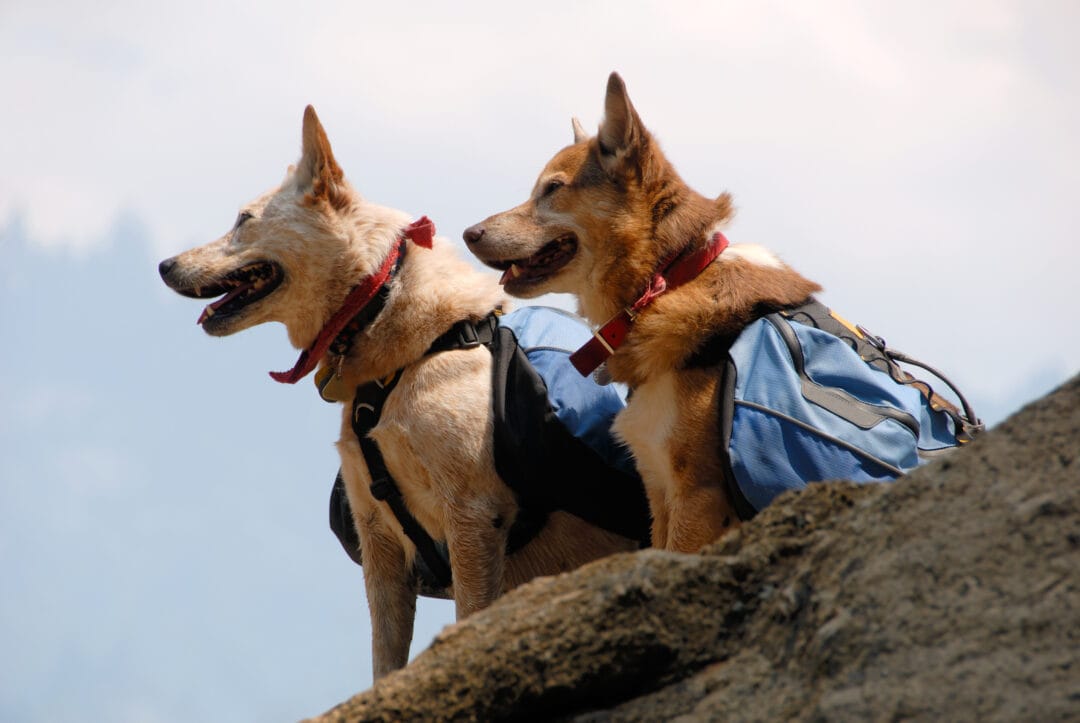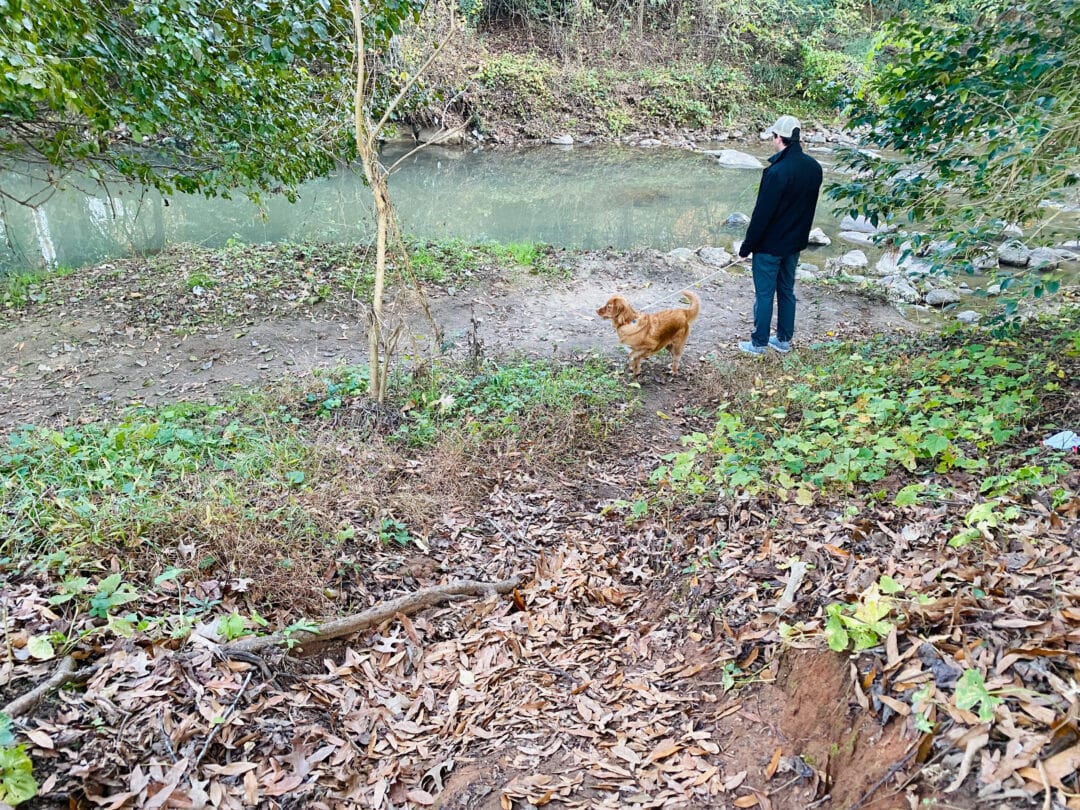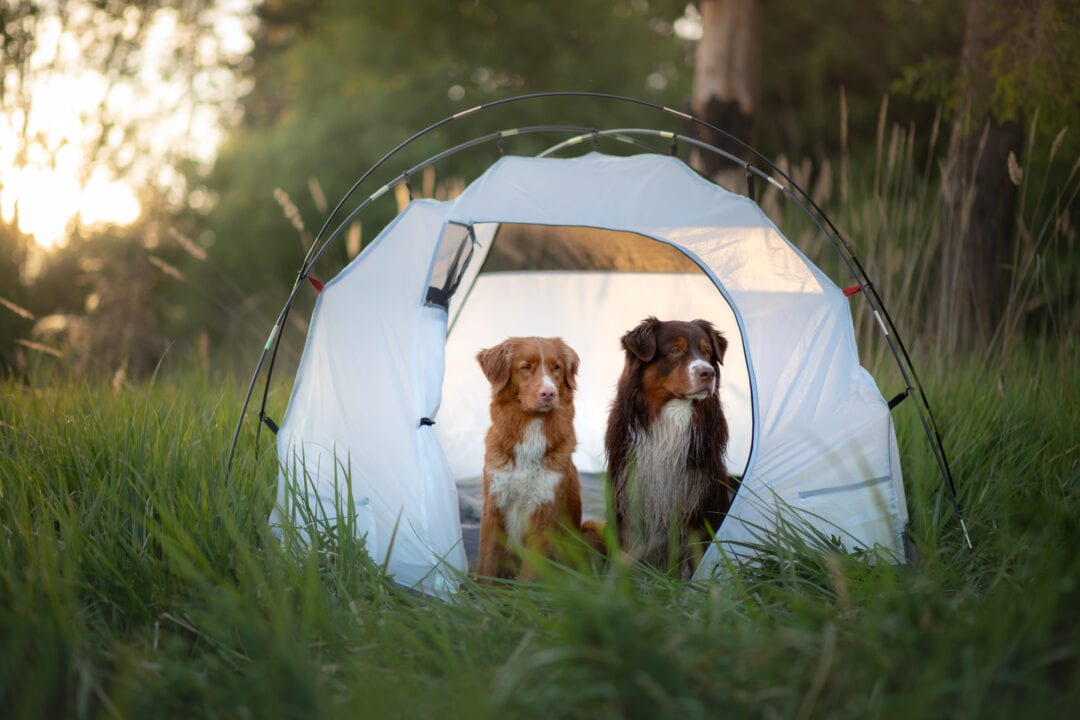Many people love going out on adventures in the wilderness, but bringing a dog along adds a whole new layer of adventure all on its own. Witnessing the unbridled joy of your pup exploring the great outdoors is one of the best ways to get a new perspective on the beauty and wonder of the natural world.
However, hiking and camping with a dog also comes with its own risks and challenges. Here’s what to consider and how to prepare for bringing Fido along on your next great adventure.
Your pup can be a BARK Ranger at these dog-friendly national parks

1. Make sure your dog is up to the challenge
Not all dogs are created equal; their age, breed, size, and training can all affect what kinds of trips you can take them on. Owners need to consider all of these factors before they choose an adventure for their pups.
- Age: Young puppies shouldn’t go on long or strenuous hikes, as their skeletons aren’t developed enough to handle the strain; older dogs will need to slow down as they age.
- Breed: Many small breeds are unexpectedly athletic and love hiking and running, while there are seemingly tough breeds, like pit bulls, that actually make pretty poor adventuring companions because of their restricted airways, general temperament, joint problems, and endurance levels.
- Temperament: Whatever the general rules for your type of dog are, always remember that your dog is an individual that will have its own preferences for activities and exercise, even if they don’t line up with your own.
2. Consult your vet
Your vet will be able to tell you the risk factors for your individual dog, as well as give you advice on precautionary measures, necessary supplies, and local trails that will be a good fit for their ability level.

3. Learn about possible dangers
Any kind of wilderness can pose a risk, so research the area you’re visiting beforehand. Learn about the risks specific to the region to be prepared. Here are a few things to consider:
- Potential weather dangers, such as heat waves or sudden storms
- Local plants that might be poisonous to your dog if ingested, how to identify them, and what to do if your dog eats them
- Native animals that might pose a threat—this is especially important for dog owners, as dog presence can be a major risk factor for dangerous or deadly animal encounters
The ultimate guide to boondocking with pets
4. Prepare for the worst
Any person who loves the outdoors knows that only a fool ventures into the wilderness unprepared—and this includes our canine companions. Dogs are susceptible to many of the same dangers as humans out on the trail and will need their own supplies to help avoid and manage potential risks. Here are a few common dangers:
- Overheating: This can happen to any dog after spending a long day in the sun, but is especially common in dark-haired or hairy dogs. Bring a thermometer to check your dog’s temperature; clean, cold water for them to drink; and ice packs and towels to help them cool down if they get too hot.
- Freezing: Depending on the region and the time of year, the cold can be just as dangerous as heat. Bring blankets, and consider investing in a dog jacket or dog sleeping bag if the forecast is particularly frigid.
- Accidents: Dogs are, if anything, even more injury-prone than their more careful human owners. In addition to packing extra first aid supplies like bandages and ice packs, also bring paw protectant, dog-safe eye drops, and socks or booties to protect an injured foot. Don’t forget dog-specific health information and the phone number of a local emergency vet.
Rig Roundup: 6 Pet-Friendly RVs
5. Check that your dog is microchipped
Before any big hike or trip, have fail-safes in place in case your dog runs off or gets lost. The most important thing is to get your dog microchipped. Your vet can permanently and painlessly implant a computer chip under your dog’s skin, which will tell any vet who examines it your contact information. It’s basically a more modern version of a collar tag, which your dog should also have; double-check that the information is up to date and the printing is clear. Save your dog’s microchip number as a note in your phone and take a picture of the tag number so you can reference it. As a final measure, print out a recent, clear picture of your dog that shows any distinguishing features; you can show this to other campers and hikers if you need to enlist them in a search for your dog.

6. Consider your sleeping arrangements
If you’re using a tent, make sure it’s big enough for both you and your dog and that your chosen campsite or cabin allows dogs. If possible, bring the bed or crate that your dog sleeps in at home to help them feel more comfortable and less stressed.
7. Socialize your dog ahead of time
One of the great joys of camping and hiking is getting to meet new, interesting people, but this can also be a huge stressor, especially if you’re adventuring with your dog. Proper socialization is key to ensuring your dog has a good time on the trail, as well as protecting the safety and enjoyment of everyone else you meet and interact with.
Luckily, socialization is basically just practicing interactions with people and animals, and there are lots of easy ways to socialize your dog before a camping trip:
- Go for walks in busier areas
- Sign up for a dog or puppy training class
- Visit a dog park
- Have new visitors over to your house
Hiking, camping, and backpacking with a dog is both a delight and a challenge, but if properly prepared for, there’s no reason you and your canine companion can’t have a safe and wonderful time exploring the outdoors together.





